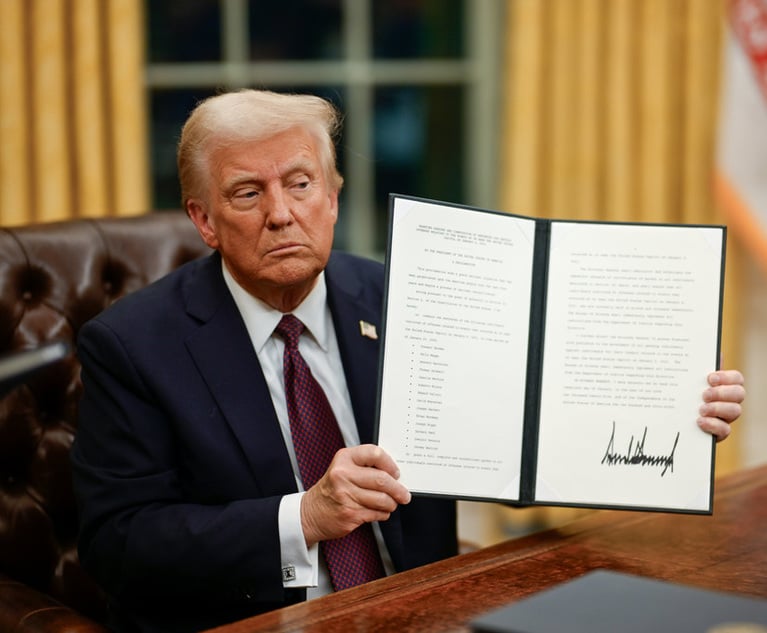Client Alignment Tool
The Client Alignment Tool establishes the anticipated range of outcomes and includes costs, strategies and unknowns.
April 05, 2018 at 03:15 PM
3 minute read
The original version of this story was published on Lean Adviser
The creation of the CLIENT ALIGNMENT TOOL establishes the Anticipated Range of Outcomes and essentially is a plan of action shared with and agreed to by the client. The CLIENT ALIGNMENT TOOL ensures that both parties have the same expectation as to the result of the project. The CLIENT ALIGNMENT TOOL should include the objectives of the project as well as costs, strategies, and unknowns..
Checklist:
- Begin investigation and planning based on KICK-OFF MEETING PLANNER.
- Investigate, Analyze, Reconsider (Doubt)
- Identify and ascertain material facts using PRELIMINARY INVESTIGATION CHECKLIST.
- Identify critical matters and critical facts
- Ascertain manageability of each component
- Identify matters outside of your control
- Identify goals of the client.
- Reach conclusion or consensus on Anticipated Range of Outcomes.
- Identify specific resources needed using TASK ASSIGNER.
- Human, financial, and material resources
- Create Internal and External Strategic Plan using the STRATEGY AND TACTICS CHECKLIST.
- Identify tactics using the STRATEGY AND TACTICS CHECKLIST.
- Develop activities flowchart, task list, and timeline incorporating resources, costs, and time required.
- Meet with client and present Anticipated Range of Outcomes.
- Adjust planning and expectations as necessary.
Lean Routine:
- Is there a clearly defined process established?
- Has the KICK-OFF MEETING PLANNER established at least a draft or "rough" Anticipated Range of Outcomes?
- Is the planning process logical and based upon results of the preceding phase?
- Does the planning consider possible outcomes and recoveries, costs, amount of time, as well as other factors?
- Does the planning process incorporate "doubt" to revisit and question assumptions? (Investigate-Analyze-Doubt)
- Does the planning consider the goals of the CLIENT?
- Is the process easy to follow and charted?
- Has the planning process defined the desired outcome?
- Have critical players/resources been analyzed and identified?
- In allocating resources using the TASK ASSIGNER, are internal legal teams/staff attorneys included?
- In allocating resources using the TASK ASSIGNER, are other key players included, such as business managers, expert witnesses, and PMKs?
- Have unimportant and irrelevant materials been identified and eliminated through the use of the PRELIMINARY INVESTIGATION CHECKLIST?
- Have material facts been identified and ascertained?
- Is the internal strategy sound and based on ascertainable facts?
- Have you considered all possible strategies?
- Will the strategy allow you to create an alignment tool that clearly communicates to the client an "Anticipated Range of Outcomes"?
- Does the Anticipated Range of Outcomes anticipate client reaction?
NOT FOR REPRINT
© 2025 ALM Global, LLC, All Rights Reserved. Request academic re-use from www.copyright.com. All other uses, submit a request to [email protected]. For more information visit Asset & Logo Licensing.
You Might Like
View All

'Where Were the Lawyers?' Judge Blocks Trump's Birthright Citizenship Order
3 minute read
Netflix Music Guru Becomes First GC of Startup Helping Independent Artists Monetize Catalogs
2 minute read
'Ridiculously Busy': Several Law Firms Position Themselves as Go-To Experts on Trump’s Executive Orders
5 minute readTrending Stories
- 15th Circuit Considers Challenge to Louisiana's Ten Commandments Law
- 2Crocs Accused of Padding Revenue With Channel-Stuffing HEYDUDE Shoes
- 3E-discovery Practitioners Are Racing to Adapt to Social Media’s Evolving Landscape
- 4The Law Firm Disrupted: For Office Policies, Big Law Has Its Ear to the Market, Not to Trump
- 5FTC Finalizes Child Online Privacy Rule Updates, But Ferguson Eyes Further Changes
Who Got The Work
J. Brugh Lower of Gibbons has entered an appearance for industrial equipment supplier Devco Corporation in a pending trademark infringement lawsuit. The suit, accusing the defendant of selling knock-off Graco products, was filed Dec. 18 in New Jersey District Court by Rivkin Radler on behalf of Graco Inc. and Graco Minnesota. The case, assigned to U.S. District Judge Zahid N. Quraishi, is 3:24-cv-11294, Graco Inc. et al v. Devco Corporation.
Who Got The Work
Rebecca Maller-Stein and Kent A. Yalowitz of Arnold & Porter Kaye Scholer have entered their appearances for Hanaco Venture Capital and its executives, Lior Prosor and David Frankel, in a pending securities lawsuit. The action, filed on Dec. 24 in New York Southern District Court by Zell, Aron & Co. on behalf of Goldeneye Advisors, accuses the defendants of negligently and fraudulently managing the plaintiff's $1 million investment. The case, assigned to U.S. District Judge Vernon S. Broderick, is 1:24-cv-09918, Goldeneye Advisors, LLC v. Hanaco Venture Capital, Ltd. et al.
Who Got The Work
Attorneys from A&O Shearman has stepped in as defense counsel for Toronto-Dominion Bank and other defendants in a pending securities class action. The suit, filed Dec. 11 in New York Southern District Court by Bleichmar Fonti & Auld, accuses the defendants of concealing the bank's 'pervasive' deficiencies in regards to its compliance with the Bank Secrecy Act and the quality of its anti-money laundering controls. The case, assigned to U.S. District Judge Arun Subramanian, is 1:24-cv-09445, Gonzalez v. The Toronto-Dominion Bank et al.
Who Got The Work
Crown Castle International, a Pennsylvania company providing shared communications infrastructure, has turned to Luke D. Wolf of Gordon Rees Scully Mansukhani to fend off a pending breach-of-contract lawsuit. The court action, filed Nov. 25 in Michigan Eastern District Court by Hooper Hathaway PC on behalf of The Town Residences LLC, accuses Crown Castle of failing to transfer approximately $30,000 in utility payments from T-Mobile in breach of a roof-top lease and assignment agreement. The case, assigned to U.S. District Judge Susan K. Declercq, is 2:24-cv-13131, The Town Residences LLC v. T-Mobile US, Inc. et al.
Who Got The Work
Wilfred P. Coronato and Daniel M. Schwartz of McCarter & English have stepped in as defense counsel to Electrolux Home Products Inc. in a pending product liability lawsuit. The court action, filed Nov. 26 in New York Eastern District Court by Poulos Lopiccolo PC and Nagel Rice LLP on behalf of David Stern, alleges that the defendant's refrigerators’ drawers and shelving repeatedly break and fall apart within months after purchase. The case, assigned to U.S. District Judge Joan M. Azrack, is 2:24-cv-08204, Stern v. Electrolux Home Products, Inc.
Featured Firms
Law Offices of Gary Martin Hays & Associates, P.C.
(470) 294-1674
Law Offices of Mark E. Salomone
(857) 444-6468
Smith & Hassler
(713) 739-1250








